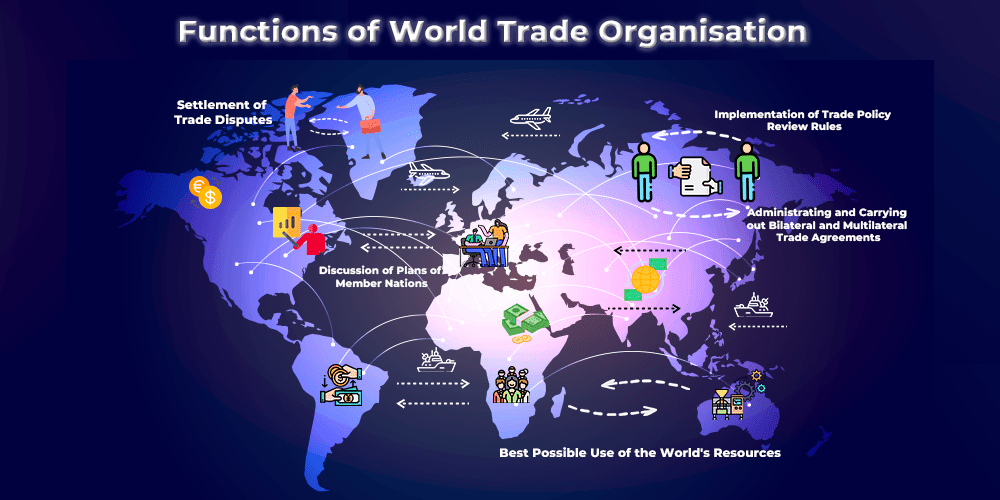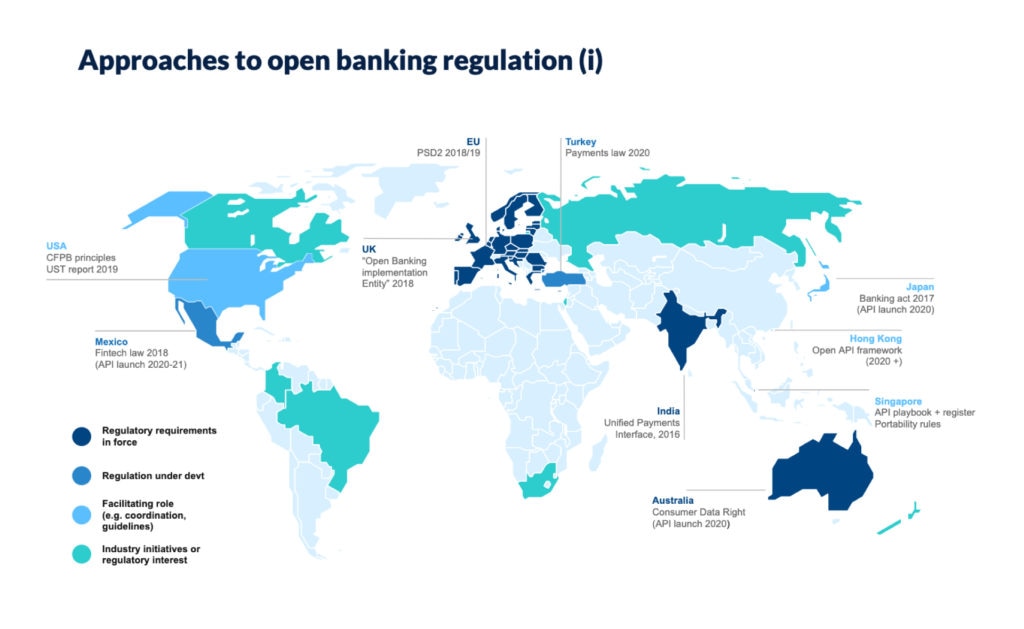
The World’s Trade Traffic Cop: Understanding the Vital Role of the WTO in Global Trade Regulation
Have you ever wondered how the vast network of international trade operates? How do billions of dollars worth of goods and services move across borders every day without constant disputes or chaos? The answer, in large part, lies with the World Trade Organization (WTO). Far from being an obscure bureaucratic body, the WTO acts as the "traffic cop" and "rulebook" for global commerce, playing an indispensable role in regulating, facilitating, and stabilizing the complex world of international trade.
For beginners, understanding the WTO’s functions might seem daunting, but its core mission is surprisingly simple: to help trade flow as smoothly, predictably, and freely as possible. In this comprehensive guide, we’ll break down the WTO’s essential roles, its guiding principles, the benefits it brings, and the challenges it faces in an ever-evolving global economy.
What Exactly Is the WTO? A Brief Introduction
The World Trade Organization (WTO) is an intergovernmental organization that regulates international trade. It officially began in 1995, but its roots are much older, stemming from the General Agreement on Tariffs and Trade (GATT) established after World War II.
Think of the WTO as:
- A Forum for Negotiations: Where governments discuss and agree on new trade rules.
- A Rulebook: A collection of agreements that legally bind member countries to specific trade policies.
- A Referee: A system for resolving trade disputes between member countries.
Its primary goal is to ensure that trade flows smoothly, predictably, and freely, leading to economic growth and development for all participating nations.
Why Do We Need a Global Trade Regulator? The Chaos Before the Rules
To truly appreciate the WTO’s role, it’s crucial to understand what global trade was like before its robust framework. Imagine a world where every country could arbitrarily raise tariffs (taxes on imports) on a whim, impose quotas (limits on imported goods), or discriminate against products from specific nations.
- The Pre-WTO "Wild West": Before the establishment of the GATT (the WTO’s predecessor) in 1948, international trade was often characterized by:
- Protectionism: Countries heavily shielded their domestic industries with high tariffs, making imported goods extremely expensive.
- Trade Wars: Nations retaliated against each other’s protectionist measures, leading to cycles of escalating tariffs that choked off trade, like during the Great Depression of the 1930s.
- Unpredictability: Businesses had no certainty about future trade rules, making long-term investments and international supply chains risky.
- Lack of Fairness: Weaker nations were often exploited or disadvantaged by stronger trading partners.
The GATT was created to bring order to this chaos, and the WTO expanded upon this mission, creating a more structured, rules-based system for global commerce.
The Core Pillars: Key Functions of the WTO
The WTO’s role in global trade regulation can be broken down into several interconnected and vital functions:
1. Administering Existing Trade Agreements
At its heart, the WTO is the custodian of a vast set of international trade agreements. These agreements, negotiated and signed by the bulk of the world’s trading nations, cover everything from tariffs and customs procedures to services, intellectual property, and agricultural subsidies.
- The "Rulebook": The WTO’s agreements (often referred to as the "WTO rulebook") provide a legal framework for international trade. They aren’t just recommendations; they are legally binding commitments that member countries have agreed to uphold.
- Ensuring Compliance: The WTO monitors how member countries implement and adhere to these agreements, promoting consistency and fairness.
- Examples of Agreements:
- Agreement on Agriculture: Deals with subsidies and market access for farm products.
- General Agreement on Trade in Services (GATS): Covers international trade in services (e.g., banking, telecommunications, tourism).
- Agreement on Trade-Related Aspects of Intellectual Property Rights (TRIPS): Protects patents, copyrights, and trademarks across borders.
2. Forum for Multilateral Trade Negotiations
One of the WTO’s most dynamic roles is to provide a platform for member governments to negotiate new trade agreements and update existing ones. These negotiations aim to further reduce barriers to trade and address emerging issues in the global economy.
- "Rounds" of Negotiations: Historically, major negotiations have been conducted in "rounds," such as the Uruguay Round (which led to the creation of the WTO) and the ongoing Doha Development Agenda.
- Reducing Trade Barriers: The primary objective of these negotiations is to progressively lower tariffs, eliminate non-tariff barriers (like import quotas or overly complex customs procedures), and open up markets for goods and services.
- Addressing New Challenges: As the global economy evolves, the WTO provides a space to discuss issues like digital trade, e-commerce, environmental concerns related to trade, and global supply chain resilience.
3. Handling Trade Disputes (The Dispute Settlement Body)
Perhaps the most crucial and unique function of the WTO is its robust system for resolving trade disputes between member countries. When one country believes another has violated a WTO agreement, it can bring a case to the WTO’s Dispute Settlement Body (DSB).
- A "Trade Court": The DSB acts much like an international court, providing a structured, rules-based mechanism to settle disagreements peacefully, rather than resorting to unilateral actions or trade wars.
- The Process:
- Consultations: Countries first try to resolve the dispute through direct talks.
- Panel Stage: If consultations fail, a panel of independent trade experts is appointed to hear the case, examine the evidence, and issue a report.
- Appellate Body (Historically): Parties could appeal the panel’s findings to the Appellate Body for a final, binding decision. (Note: The Appellate Body’s functioning has been hampered since 2019 due to a lack of appointments, a major challenge for the WTO).
- Implementation: The losing party is expected to bring its policies into conformity with WTO rules. If it fails, the winning party may be authorized to impose retaliatory measures (e.g., tariffs).
- Preventing Trade Wars: This system has been highly successful in preventing minor trade disagreements from escalating into full-blown trade wars, providing predictability and stability to the global trading environment.
4. Building Trade Capacity (Technical Assistance)
The WTO recognizes that not all countries have the same capacity to engage in and benefit from international trade. Therefore, a significant part of its role involves providing technical assistance and training to developing and least-developed countries.
- Helping Developing Nations: This includes:
- Training officials: On WTO rules, negotiation strategies, and dispute settlement.
- Assisting with policy reform: Helping countries align their national laws with WTO agreements.
- Improving infrastructure: Supporting customs modernization and trade facilitation.
- Promoting integration: Helping smaller economies integrate more effectively into the multilateral trading system.
- Bridging the Gap: This function aims to ensure that the benefits of global trade are more widely shared, helping poorer nations use trade as a tool for economic development and poverty reduction.
5. Monitoring National Trade Policies
The WTO acts as a "watchdog" over its members’ trade policies through its Trade Policy Review Mechanism (TPRM).
- Transparency and Scrutiny: All WTO members undergo regular reviews of their trade policies and practices. These reviews involve a detailed report by the WTO Secretariat and a policy statement by the member country.
- Peer Review: Other WTO members can ask questions and comment on the reviewed country’s policies, fostering transparency and allowing for peer scrutiny.
- Encouraging Compliance: This mechanism helps ensure that members are transparent about their trade policies and encourages them to adhere to their WTO commitments.
The Guiding Principles: What Makes WTO Rules Fair?
The WTO’s effectiveness in global trade regulation stems from a set of fundamental principles that underpin all its agreements and activities. These principles are designed to create a level playing field and ensure fairness in international trade.
1. Non-Discrimination
This is arguably the most crucial principle and has two main components:
- Most-Favored-Nation (MFN) Treatment: A country cannot discriminate between its trading partners. If it grants a special favor (like a lower customs duty) to one country, it must do the same for all other WTO members.
- Simple example: If France lowers its tariff on cars from Germany, it must offer the same lower tariff on cars from Japan, the USA, and every other WTO member.
- National Treatment: Imported goods and services should be treated no less favorably than domestically produced goods and services once they have entered the market.
- Simple example: If a country taxes imported apples at 5% and domestic apples at 0%, that violates national treatment. Once imported apples are in the country, they should be taxed the same as local apples.
2. Predictability (Through Binding Tariffs)
The WTO aims to make trade as predictable as possible. This is primarily achieved through "binding" tariffs.
- Bound Tariffs: When countries negotiate tariff reductions, they "bind" them, meaning they commit not to raise them above a certain level. These bound tariffs are published and serve as a guarantee to traders and investors.
- Certainty for Businesses: This certainty encourages businesses to invest and plan for the long term, knowing that the rules of the game won’t suddenly change.
3. Transparency
The WTO emphasizes openness and clarity in trade policies.
- Published Rules: Member countries are required to publish their trade regulations and promptly notify the WTO of any changes.
- Clear Information: This principle ensures that businesses, investors, and other governments have access to the information they need to conduct international trade.
4. Promoting Fair Competition
While promoting free trade, the WTO also seeks to ensure that competition is fair.
- Against Unfair Practices: WTO rules address practices like:
- Dumping: Selling products in an export market at a price lower than their normal value in the domestic market.
- Subsidies: Government support that gives domestic industries an unfair advantage.
- Trade Remedies: The WTO allows countries to impose "trade remedies" (like anti-dumping duties or countervailing duties) to offset the effects of unfair trade practices, but only under specific, rules-based conditions.
5. Encouraging Development and Economic Reform
The WTO recognizes the unique needs of developing countries and provides them with special provisions.
- "Special and Differential Treatment": This allows developing countries more flexibility in implementing WTO agreements, longer transition periods, and technical assistance.
- Trade as a Tool for Development: The WTO aims to help developing countries integrate into the global trading system and use trade as a catalyst for economic growth and poverty reduction.
The Tangible Benefits: Why WTO Regulation Matters for Everyone
The WTO’s regulatory role translates into concrete benefits that impact economies, businesses, and even everyday consumers worldwide.
- Economic Growth: By reducing trade barriers, the WTO encourages greater trade volumes, leading to increased production, investment, and job creation globally.
- Lower Prices and More Choice for Consumers: Reduced tariffs and increased competition from imports mean that consumers often pay less for a wider variety of goods and services.
- Increased Predictability and Stability: The rules-based system reduces uncertainty and the risk of arbitrary trade actions, creating a more stable environment for international business.
- Reduced Trade Barriers: Through negotiations, the WTO has significantly lowered tariffs and addressed non-tariff barriers, making it easier and cheaper for goods and services to cross borders.
- Fairer Competition: By setting rules against dumping and unfair subsidies, the WTO helps ensure that businesses compete on a more level playing field.
- Peaceful Resolution of Disputes: The dispute settlement system provides a crucial mechanism to resolve trade conflicts through dialogue and legal processes, preventing them from escalating into wider economic or political tensions.
- Support for Developing Countries: Through technical assistance and special provisions, the WTO helps developing nations integrate into the global economy and harness trade for their development goals.
- Innovation and Efficiency: Global competition spurred by trade encourages companies to become more innovative and efficient to compete effectively.
Navigating the Storm: Challenges and Criticisms Facing the WTO
Despite its vital role, the WTO is not without its challenges and criticisms, especially in the current geopolitical climate.
- Slow Pace of Negotiations: Reaching consensus among 164 diverse member countries on complex trade issues is incredibly difficult, leading to long, drawn-out negotiation "rounds" (like the Doha Round) that often stall.
- Paralysis of the Appellate Body: Since late 2019, the WTO’s Appellate Body (the final court of appeal for trade disputes) has been unable to function due to a lack of new appointments, primarily blocked by the United States. This undermines the enforceability of WTO rules and weakens the dispute settlement system.
- Representativeness and Equity: Some critics argue that the WTO’s structure and decision-making processes do not adequately reflect the interests of all members, particularly developing countries, or that developed nations still hold disproportionate power.
- Addressing New Global Issues: The WTO faces pressure to adapt its rules to address emerging challenges like:
- Digital Trade: How to regulate cross-border data flows, digital services, and e-commerce.
- Climate Change: The intersection of trade policies and environmental sustainability.
- Global Supply Chain Resilience: How trade rules can help countries better prepare for and respond to future shocks (like pandemics or geopolitical conflicts).
- Anti-Globalization Sentiments: A rise in protectionist sentiments and nationalism in some countries has led to skepticism about the benefits of multilateral trade and the rules-based global order.
- Trade Tensions and Unilateralism: Major trading powers sometimes bypass or challenge WTO rules through unilateral actions (e.g., imposing tariffs outside of WTO rulings), putting strain on the system.
Conclusion: The Indispensable Anchor in a Turbulent Sea
The World Trade Organization, despite its imperfections and ongoing challenges, remains an indispensable institution in global trade regulation. It provides the essential framework, the agreed-upon rules, and the dispute resolution mechanism that prevents international commerce from descending into a chaotic free-for-all.
For businesses, it offers predictability and market access. For consumers, it means more choice and often lower prices. For nations, it provides a structured platform for cooperation and a peaceful means to resolve disagreements, preventing trade wars that could cripple the global economy.
As the world grapples with new technologies, environmental concerns, and geopolitical shifts, the WTO faces immense pressure to adapt and evolve. Its ability to reform, address new issues, and restore the full functionality of its dispute settlement system will be crucial for the future of a stable, rules-based global trading system. In essence, the WTO is not just a facilitator of trade; it is a cornerstone of global economic stability and cooperation.



Post Comment